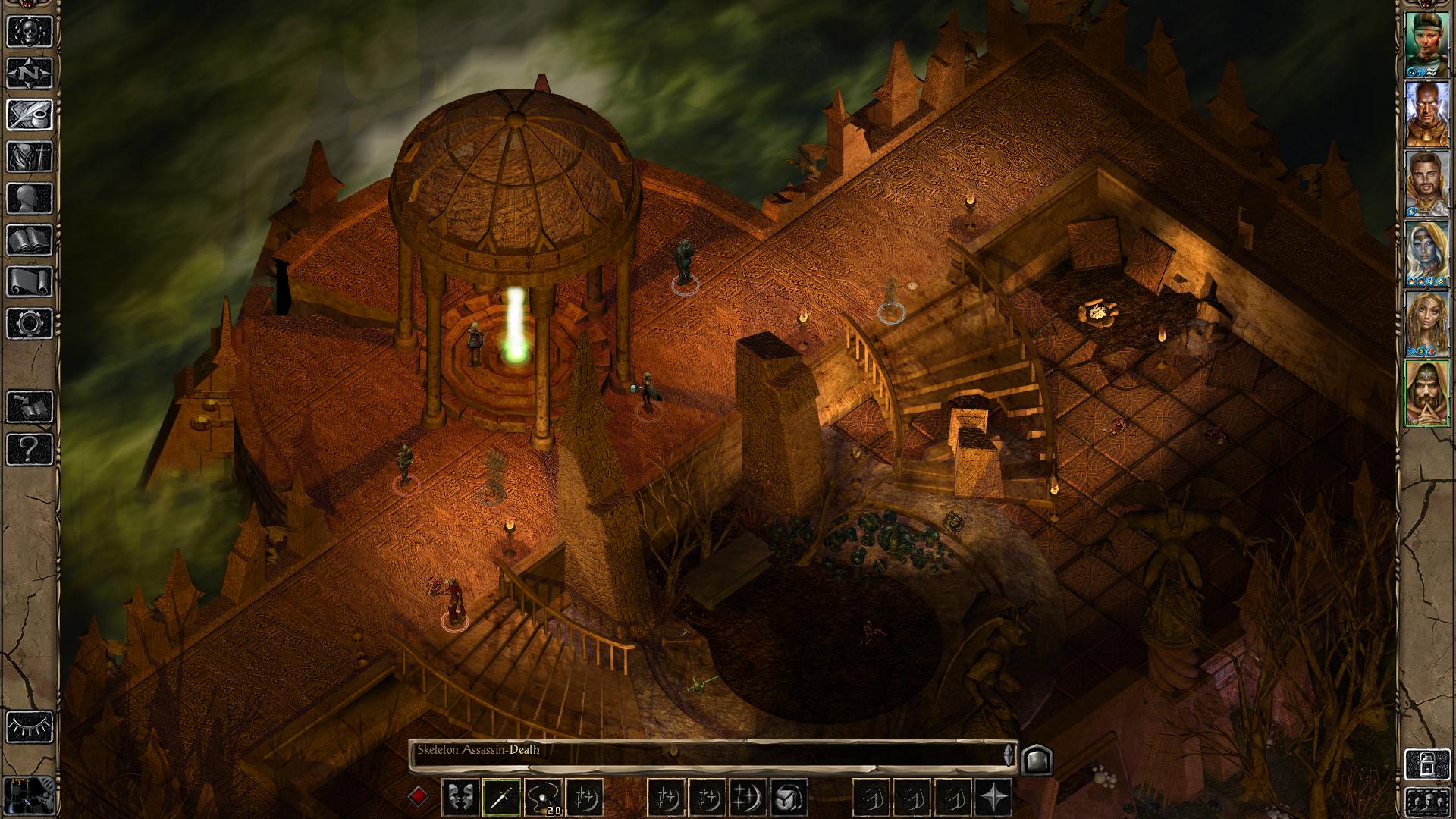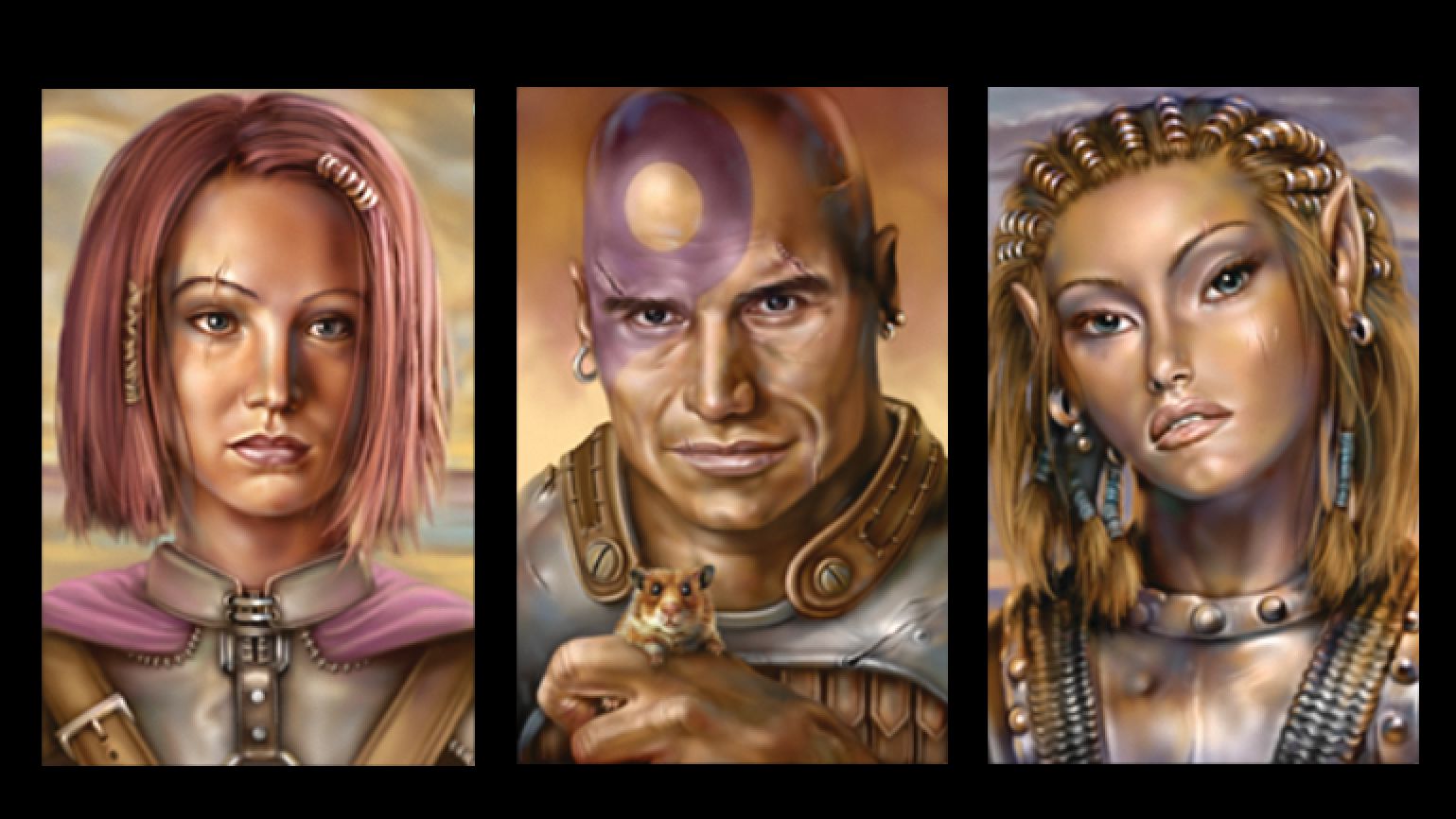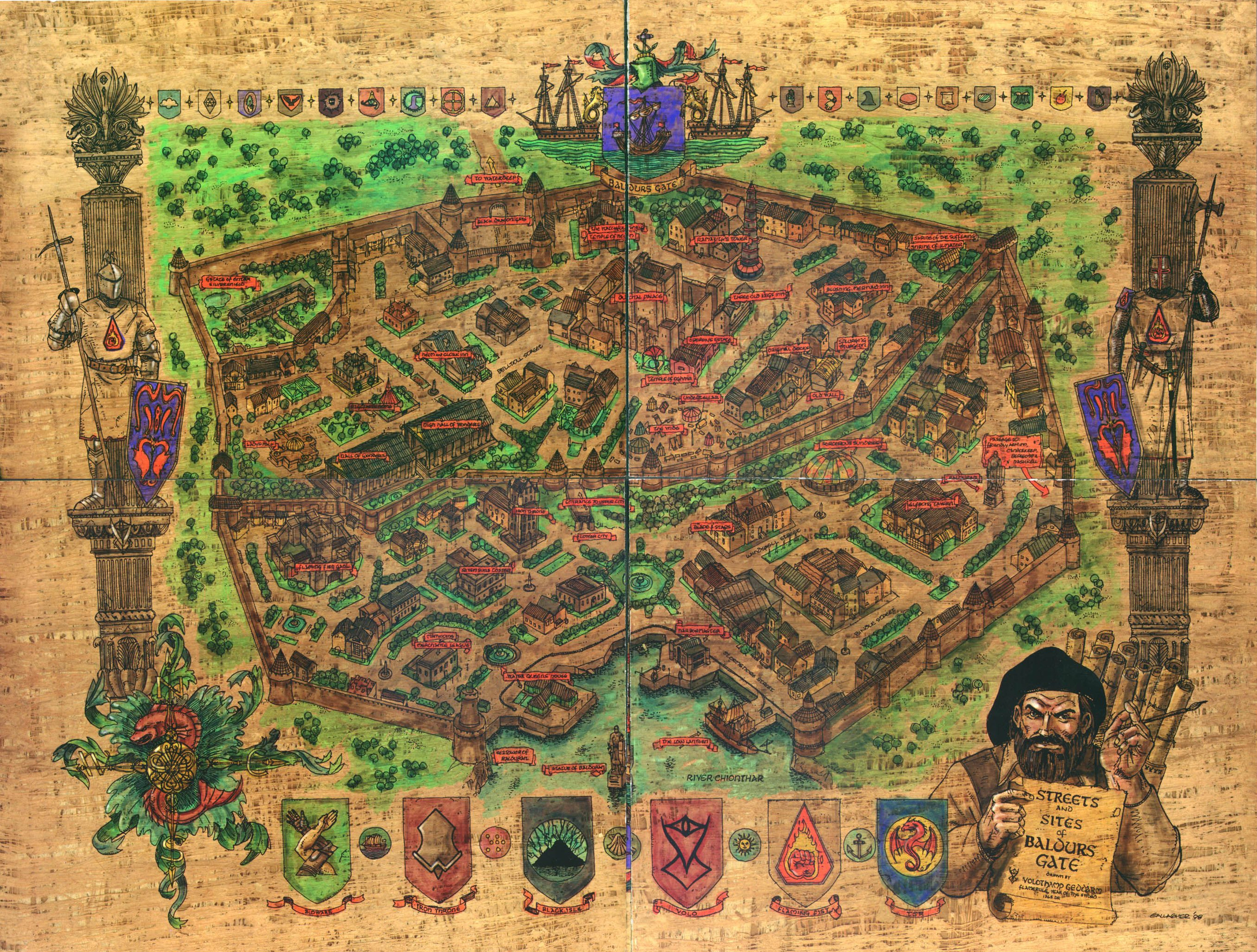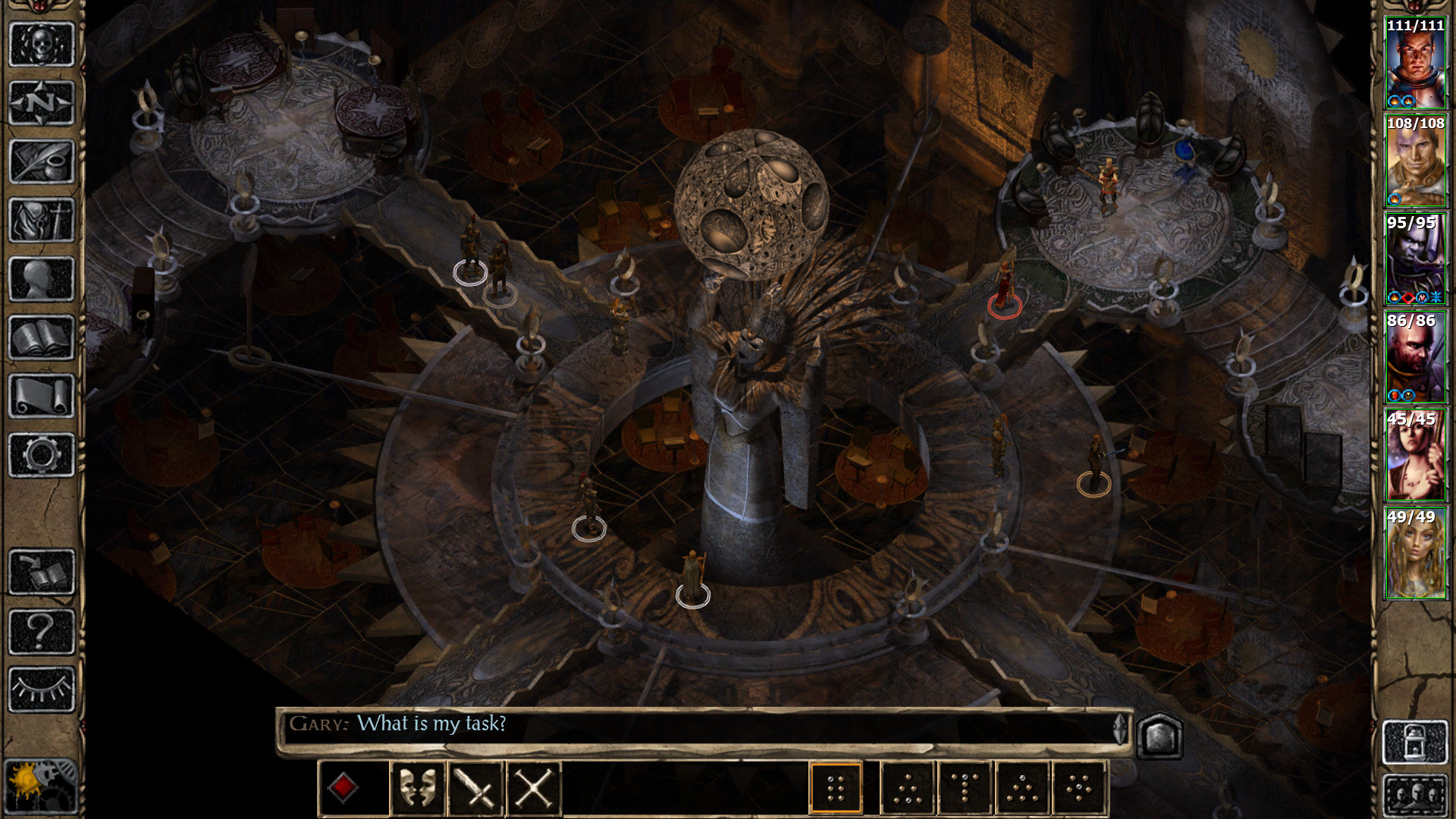The history of Baldur's Gate
Join us as we return to one of the most troubled towns in the Forgotten Realms.

Dark Alliance was a big enough hit for Interplay to commission a sequel on the PlayStation 2 and Xbox. Released in 2004, Dark Alliance II took the safe path of virtually retreading in the steps of the first game, with a few minor enhancements. With Chris Avellone busy elsewhere (most notably on Snowblind’s Champions Of Norrath), David Maldonado took the lead design reins as Black Isle Studios developed the sequel, albeit not in total agreement with Snowblind, as a lawsuit (presumably concerning licensing issues with its self-titled engine) was brought against Interplay.
Set not long after the events of the first game, Dark Alliance II sees Baldur’s Gate and its surrounding areas once more in the grip of fear. Eldrith and her Onyx Tower may be history, but the three heroes who defeated her have disappeared, and further dastardly enemies stalk the land. Once more, a band of adventurers make the journey to Baldur’s Gate seeking fame and fortune, and perhaps also to discover the fate of their forebears. Cleric of Helm, Allessia Faithhammer, treasure hunter dwarf Borador and mysterious moon elf Ysuran Auondril are three of the five characters that can take this mission to rid the land of its troubles.
Despite proud assertions of a new direction by Black Isle producer, Kevin Osburn, Dark Alliance delivered a startlingly familiar experience to its predecessor. The game’s engine was as elegant as ever, with some minor improvements in environment interactivity. New monsters, weapons and missions were a given; how these would differ, and be used differently, to the first game was what counted, and here there was little change. Of course, this was not necessarily a bad thing, and given its strong sales, it’s clear fans were quite happy to lap up more of the same. And the game did at least offer some flexibility and variety with its workshop feature, where characters could take base weapons and modify them with rune stones and other various gems to create magical weapons.
Yet it’s impossible to look at the release of Baldur’s Gate: Dark Alliance II without considering the background turmoil at the time. Interplay, bought out totally by Titus Interactive in 2001, was struggling, as was its new owners, whose solution was to begin shutting down its various satellite studios, including, eventually, Black Isle. By the time of Dark Alliance II’s release in 2004, the studio was practically no more. Chris Avellone had already left Black Isle in 2003, disenfranchised with the cancellation of Baldur’s Gate III, but still has fond memories of the entire Baldur’s Gate franchise.
“I think Baldur’s Gate and Dark Alliance captured and delivered on a nostalgia and absence in the market,” he notes. “People had played the SSI Gold Box games and loved them, but there wasn’t anything to replace them…until Baldur’s Gate happened. It wasn’t just a good game, it tapped THE HISTORY OF: BALDUR’S GATE into the vein of nostalgia, and really connected with it.” For designer James Ohlen, the first Baldur’s Gate in particular proved a massive learning curve for the fledgling developer, but a valuable one nonetheless. “All of us were learning, and we were learning from each other, and from Black Isle, who had more experience than us. It helped form what I know about videogames today.”
Today, the Baldur’s Gate series lives on thanks to former BioWare programmer Cameron Tofer and his company, Beamdog. By releasing the enhanced versions of the original games, along with the other infinity engine titles, and related games such as Neverwinter Nights, Beamdog has capitalized on the same nostalgia that made Baldur’s Gate such a success in the first place. Tuned in to work on modern hardware, there’s never been a better time to rediscover the world of Baldur’s Gate. So what are you waiting for? There are evildoers who need their arses handed to them! Adventurers, roll for initiative!—Graeme Mason

Heroes and villains
Sarevok
Half-brother of Gorion’s Ward, Sarevok escaped his demonic father’s sacrificial ritual when it was interrupted by Gorion and the Harpers. Adopted by a member of the Iron Throne, he becomes the main antagonist of Baldur’s Gate, determined to kill his fellow Bhaalspawn and ascend into Godhood himself.
The biggest gaming news, reviews and hardware deals
Keep up to date with the most important stories and the best deals, as picked by the PC Gamer team.
Imoen
The main character’s childhood friend, Imoen is an expert thief, thus valuable throughout the Baldur’s Gate campaigns. An eternal child at heart, Imoen is forced to grow up fast during Baldur’s Gate II after being tortured by Irenicus, then arrested by the Cowled Wizards for unlicensed magic use. Tsk.
Minsc
One of Baldur’s Gate’s most memorable characters, Minsc is a neutral good ranger, and slightly unhinged thanks to his strange love for giant space hamster, Boo, actually a normal sized and very ordinary hamster. Named after the Russian city, Minsc is possibly the most quotable character in the entire series.
Jon Irenicus
Baldur’s Gate II’s chief antagonist, the mage Irenicus, captures the lead character and experiments on them and Imoen in order to divulge the mysteries of their demonic ancestry. An elf by birth, he was cast out of his home city thanks to his insane power-hungry attempt to become a god.
Khalid
Eschewing his valiant and determined portrait, Khalid is a half-elf fighter, member of a prestigious group of adventurers, the Harpers, and actually a rather nervous chap. Married to fellow Harper, Jaheira, he unfortunately meets an untimely demise at the hands of Jon Irenicus in Baldur’s Gate II.
Khorgan Bloodaxe
Not every party member has to be a good guy. A chaotic evil bezerker dwarf, Korgan can be found at the Copper Coronet Inn when his personal quest is accepted. Worth having around, not just for his combative abilities, but also the banter between him and any good characters in the party.
Allessia Faithhammer
A Cleric of Helm, Allessia is a do-gooder, bound to protect the innocent and serving the public, kind of like a medieval RoboCop. Hearing of the troubles in Baldur’s Gate, she travels there in Dark Alliance II, and has a neat range of magical attacks at her disposal.
Vahn
Arcane Archers are known for their ability to land an arrow onto a pinhead, often with additional magical effects. Arriving in Baldur’s Gate at the wrong time, Vahn is soon knee-deep in the political and social upheaval of the famous city and up against Eldrith’s Dark Alliance.

The missing Baldur's Gates
“I’m actually glad we didn’t really get the chance to make Baldur’s Gate III, as I think what was planned, The Black Hound, had little to do with the franchise,” says Chris Avellone when we ask him about Black Isle’s proposed third game in the famous RPG series. “While the Baldur’s Gate series kept the player protagonist in the forefront,” the designer continues, “Baldur’s Gate III took a step backward and made the antagonist’s woes more important to the storyline, which I think ends up reducing the player agency. That said, there was some great art and level design ideas in it, I just didn’t care much for the premise or the companion ideas.”
The third game, as perhaps befitted the circuitous ending to Throne Of Bhaal, would include none of the characters that had helped make the series so famous, and was unceremoniously cancelled when Interplay’s deal with Wizards Of The Coast abruptly ended. BioWare itself was undeterred, and another major franchise was born from the ashes. “I’m a Dungeons & Dragons fan,” recalls James Ohlen, “so I said we can’t just give up on it. So we did our own version, Dragon Age: Origins, which was essentially just Baldur’s Gate on console.”
But Baldur’s Gate III isn’t the only abandoned game in the series. With BioWare busy on Tales Of The Sword Coast and the Baldur’s Gate sequel, British developer Runecraft , already involved with publisher Interplay, was contracted to produce a PlayStation port of Baldur’s Gate. With changes to the engine and gameplay made, including a smooth-scrolling display (as opposed to the PC game’s push scroll), the game was almost completed before issues at Interplay—it had been in financial difficulty, despite the success of Baldur’s Gate—led to a takeover by French publisher Titus. PlayStation Baldur’s Gate, among many other projects, was brusquely dropped from development, as the focus remained solely on the sequel that would seek to dramatically improve every aspect of the original hit.

Don't go adventuring without these
Ankheg Armour
Forged from the shell of a giant Ankheg, this suit is as strong as plate mail, yet as light as leather armour.
Bag of Holding
For those adventurers obsessed with loot, this magical bag is a must given it can stack an amazing 100 items inside its soft folds.
Elixir of Health
This ubiquitous brew restores precious hit points in an instant, making it a vital addition to any adventurer’s backpack.
Wand of Magic Missiles
This trusty wand can be used by any class, making it a good alternative to ranged weapons for rogues or clerics.
Rod of Resurrection
Has Minsc gone off and got himself killed again? No problem! One wave of this rod and any deceased party member is brought back to life.
Helmet
Coming in all shapes and sizes, helmets offer little in the way of AC. They do, however, protect against critical hits, meaning warriors should always wear one.
Magic Ring
Carry more loot! Move faster! Look like you’re wealthy! All of this and more can be yours, with a band imbued with potent magical properties.
Sling
Wizards aren’t exactly fond of hand-to-hand combat, but they can’t use bows either. Answer: this nifty sling for when the spells run out.
Composite Longbow
Stronger and more flexible than a standard longbow, these are essential for taking down enemies at a distance.
Bastard Sword
The ‘sword-and-a-half’ can be used one-handed, leaving the other hand free to wield a shield for some extra protection.

